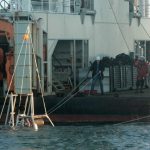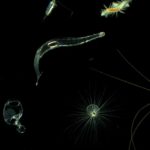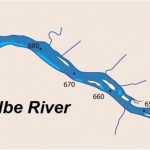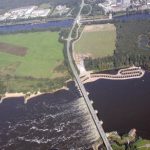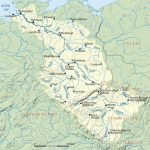The Helmholtz Zentrum Geesthacht Centre for Materials and Coastal Research (HZG) will be the Host Laboratory for the Elbe Estuary Supersite, in collaboration with the Federal Institute of Hydrology (BfG, Koblenz/Rhine) and TERENO (Terrestrial Environmental Observatories).
The Elbe was once considered to harbour one of the highest diversity and numbers of fish in European Rivers. Pollution of the river in the 1970s and 1980s, together with the construction of a weir, led to a collapse of the ecosystem and extinction of many species. Subsequent improvement of water quality and construction of a fish pass have led to a recovery in fish abundance and species. Improvement of water quality has affected the biogeochemical cycling of organic carbon in the tidal freshwater zone, which has become as important as the turbidity zone as a filter for organic carbon.
The tidal zone is of great economic and ecological importance for Hamburg and large parts of Northern Germany, serving as an important transport channel for large vessels. Since the early 19th century, the Elbe has been deepened several times, and further deepening and widening is under discussion. The German Wadden Sea receives 44 million tons/year of dredged material with variable nutrient and pollutant content. Such abrupt geometrical alterations as deepening of the ship fairway, together with modified river loads (eutrophication, pollution), are leading to hyper-turbid conditions with dramatic consequences for the estuarine ecosystem, including extensive hypoxia. Material cycling associated with waterway management has led to the estuary losing its capacity as a nitrate sink. Human interventions have increasingly changed the estuarine environment by diking, dredging, dumping and discharge with far-reaching consequences for estuarine ecosystems and their biological communities. A step change in understanding of the functioning of the German Bight (Elbe estuary – North Sea system), is needed for informed decision making for sustainable management of the Elbe estuary, to safeguard navigation, conservation, tourism, fishing, farming and settlements.
HZG will contribute expertise in the development of operational systems in oceanography and biogeochemistry in estuaries and coastal seas, and system analysis and modelling of the estuary-sea continuum. Its contribution will include: the Coastal Observing System for Northern and Arctic Seas; Ferrybox for hydrographic and biological parameters on a fixed station in the estuary of the Elbe and on regularly operating ferry lines between the mainland and the Island of Helgoland in the German Bight/North Sea; a cabled underwater observatory for real-time in-situ monitoring of hydrographic and biological parameters; historical data from stationary platforms in the North Sea; radar system for continuous monitoring of surface currents of the Elbe discharge area in the German Bight; seasonal monitoring campaigns along the tidal Elbe River; bioanalyses; stable isotope systems; and in situ technology for observation of oxygen and benthic-pelagic nutrient cycling. BfG will focus on facilitating infrastructure for detection and analysis of emerging contaminants at trace levels and innovative biological tests. The TERENO consortium will contribute expertise in integrated modelling of the full terrestrial system coupling the subsurface environment with the land surface, biosphere and atmosphere. The expertise includes a set of terrestrial simulation models such as TerrSYSMP, which is a fully integrated model of the key compartments of the terrestrial system, and which is embedded in a data assimilation framework. In addition, the consortium runs the spatially distributed, mesoscale hydrologic model mHM.


